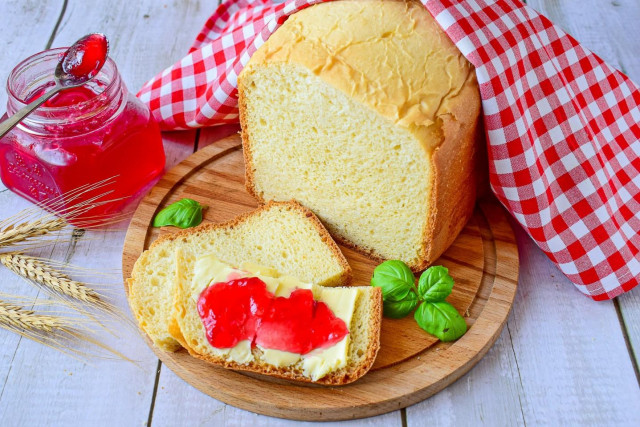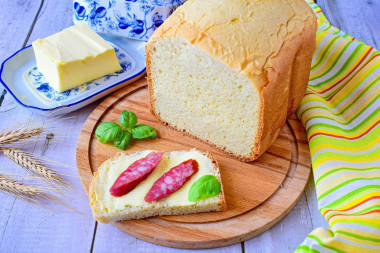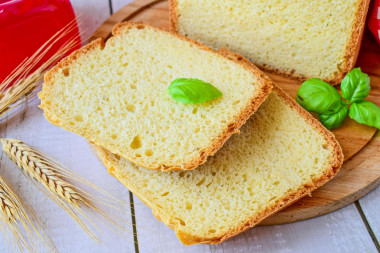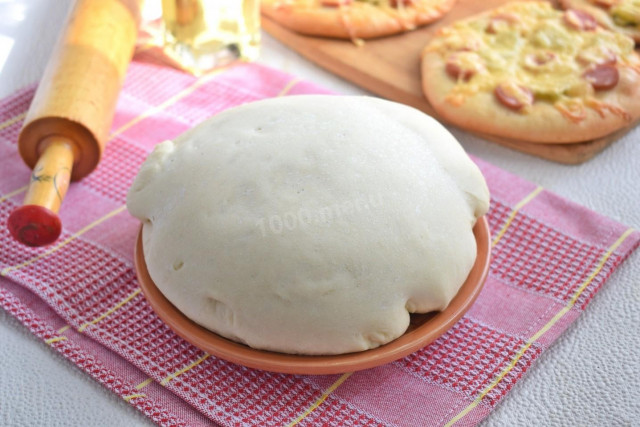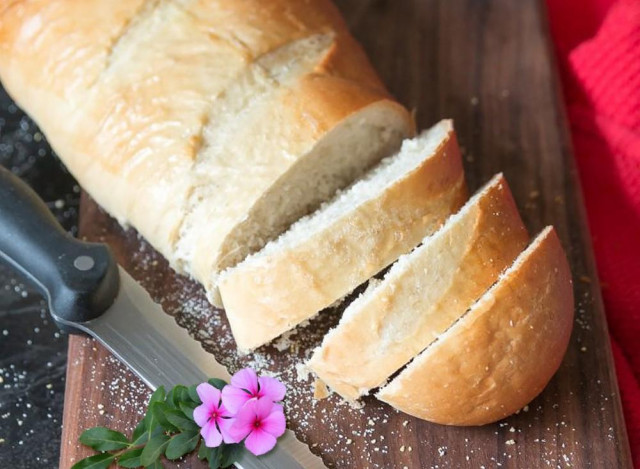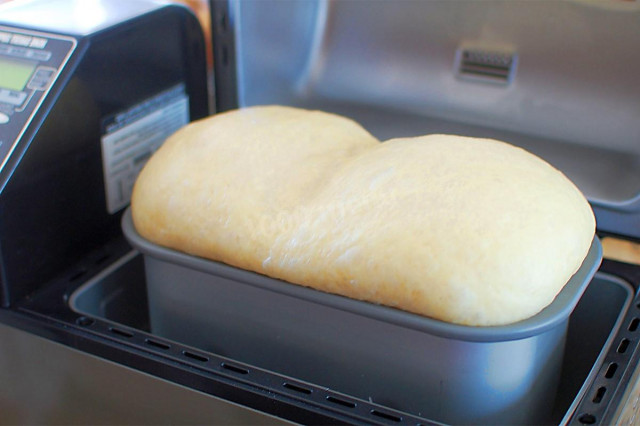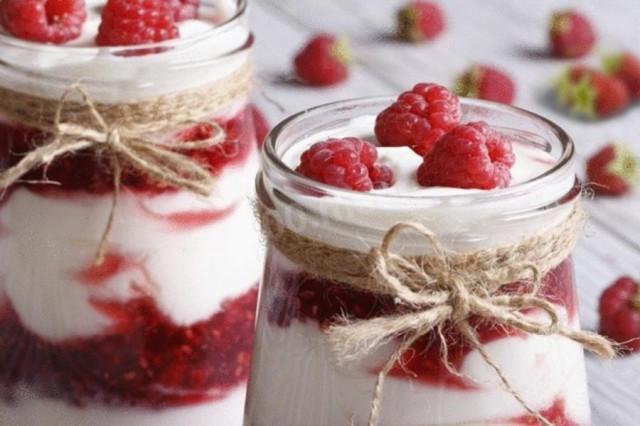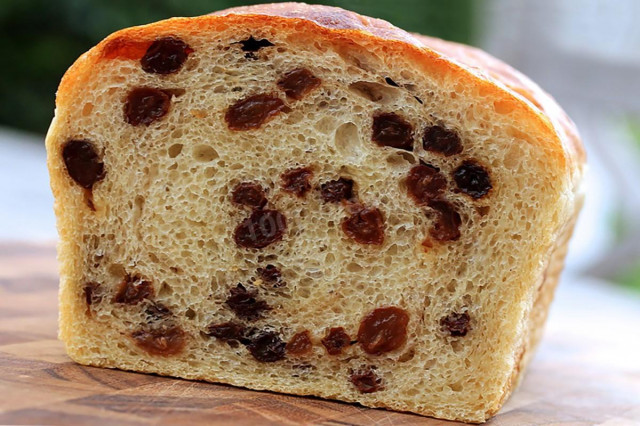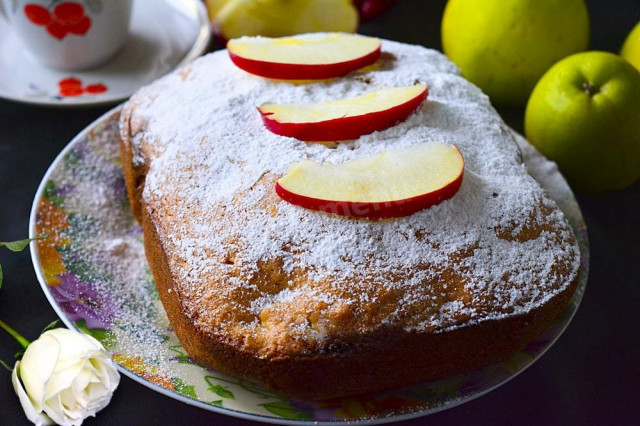Composition / ingredients
Step-by-step cooking
Step 1:
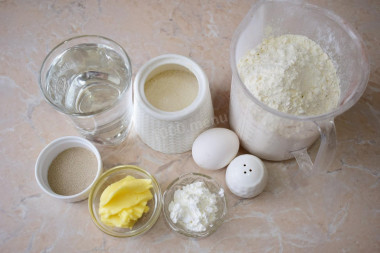
How to make white bread in a bread maker? Prepare the necessary ingredients for this. Sift the premium flour through a sieve to saturate with oxygen. Thanks to this, the finished bread will be more porous and airy.
Step 2:
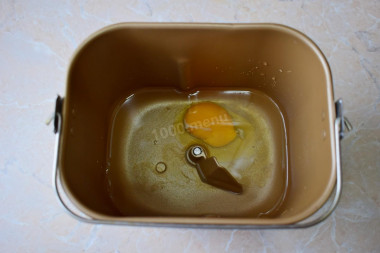
Pour the required amount of water into the bowl of the bread maker and break the egg.
Step 3:
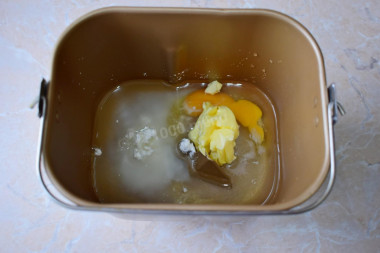
Add salt, sugar, powdered milk and soft butter.
Step 4:
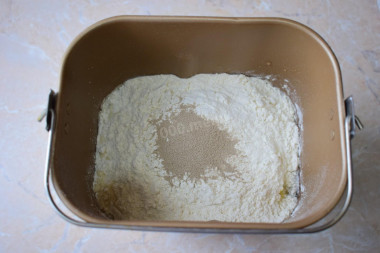
Pour in the sifted flour and yeast.
Step 5:
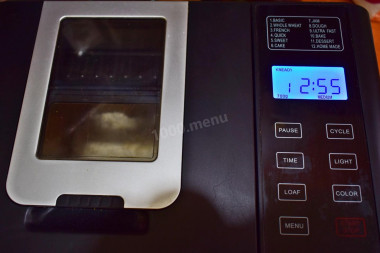
Put the bowl in the bread maker and turn on the main mode, the weight of the loaf is 700 grams, the color of the crust is average. I have this mode lasts 2h 55 minutes. At the beginning of kneading the dough, you can open the bread maker and check the consistency of the dough (if necessary, add a little flour or water). After the end of the dough kneading stage, the bread maker must not be opened in any case, otherwise the bread will be spoiled!
Step 6:
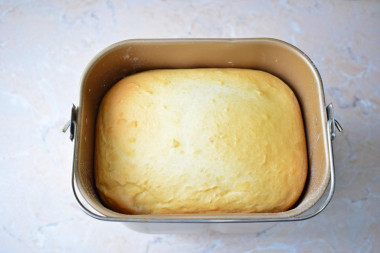
After the specified time, the bread maker will sound a ready signal. Remove the bread from the bowl.
Step 7:
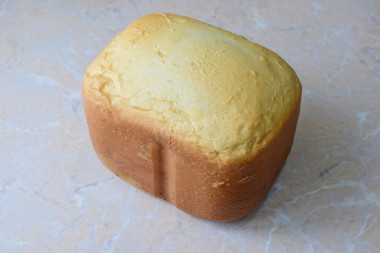
A finished loaf of a beautiful golden color with an incredible aroma. Wrap it in a towel and cool it. The finished bread is perfectly cut. Have a nice treat!
Be sure to wash the eggs before use, as even the seemingly clean shell may contain harmful bacteria. It is best to use food detergents and a brush.
Be prepared for the fact that flour may need more or less than indicated in the recipe. Focus not on the amount of flour, but on the desired consistency of the dough. To avoid mistakes, read about flour and its properties!
Important! Using dry yeast, it should be borne in mind that they occur in two forms: active and instant (read the instructions carefully before use!).
Active dry yeast looks like beads or small balls. Before applying them, they must be brought out of the "sleep mode". To do this, the active yeast is diluted in warm sweet water, milk or whey. The formed bubbles, foam or "cap" indicate that the yeast is ready for further use. Active dry yeast must be brought to complete dissolution in the liquid, otherwise, due to the remaining grains, the dough may not rise and the baking will be spoiled (yeast grains that have not dissolved in the liquid and got into the dough will not disperse on their own, which means they will not work).
Instant dry yeast is easier to use. They do not need to be activated before use. Such yeast, along with other ingredients, is simply added to the dough. As a result, the baking time is reduced.
It should also be remembered that both types of dry yeast may differ in their activity from different manufacturers.
Caloric content of products possible in the composition of the dish
- Chicken egg - 157 kcal/100g
- Egg white - 45 kcal/100g
- Egg powder - 542 kcal/100g
- Egg yolk - 352 kcal/100g
- Ostrich egg - 118 kcal/100g
- Whole durum wheat flour fortified - 333 kcal/100g
- Whole durum wheat flour universal - 364 kcal/100g
- Flour krupchatka - 348 kcal/100g
- Flour - 325 kcal/100g
- Granulated sugar - 398 kcal/100g
- Sugar - 398 kcal/100g
- Butter 82% - 734 kcal/100g
- Amateur unsalted butter - 709 kcal/100g
- Unsalted peasant butter - 661 kcal/100g
- Peasant salted butter - 652 kcal/100g
- Melted butter - 869 kcal/100g
- Salt - 0 kcal/100g
- Water - 0 kcal/100g
- Powdered milk - 465 kcal/100g
- Dry yeast - 410 kcal/100g

